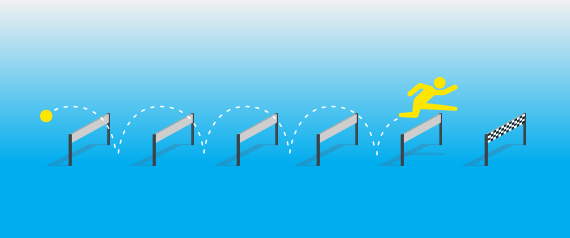Consistency sits at the core of brands. No matter what the circumstances, the people behind the brand are expected to deliver the same experience or product; a can of Coca-Cola purchased in Tokyo should taste identical to one in New York City or London. With great brands, you know what to expect, and it is delivered time after time regardless of the location.
In creative fields, consistency is likewise important. A creative firm must also deliver consistent value on every job. That reliability becomes a distinctive factor in the relationship between firm and clients, resulting in smoother production and, often, repeat business. It ultimately creates trust.
But establishing that sort of consistency, especially in a firm with many teams working in parallel, presents a challenge. The firm must establish a process that's systematic in its reliance on investigation, observation, exploration, refinement, & feedback. The creative firm must follow a set procedure.
Step One after the process is created and in place is education: everyone in the creative firm must learn and understand and agree to implement the system.
Step Two is more detail-oriented: procedures are discussed and fleshed out, including feedback loops, and contingencies with benchmarks, deadlines and goals.
Step Three involves the creation of a timeline, which must include not only sufficient space for the team to develop ideas, but also receive client input on the project in development. (The proposed pace must be manageable, but not so comfortable that the process potentially slackens from lack of momentum.)
Step Four is to keep track of your time and budget. Compare it periodically against your original expectations. This is important for future projects so you can measure the results and budget accordingly.
In Step Four, the firm enacts this process with clients. This could include planning timelines, and establishing a schedule of meetings for feedback.
Of course, this is easier said than executed. Creative work isn't the most linear; it takes time, effort, and often a lot of decisions must be made. It is important to incorporate the possibility of client delays and lack of availability or consensus into your procedure, and build in time for additional meetings, setbacks, and brainstorming.
While establishing such procedures may seem like a lot of effort for firms that are (often) already time-strapped, the results can be worth it. Clients aren't the only stakeholders comforted by consistency; it can also assure employees working at the firm. Solving problems consistently will open up a deeper client relationship and create the trust necessary to do even greater work for everyone.
Janet Odgis is the President and Creative Director of Odgis + Co, an award-winning certified woman-owned design firm based in New York City. For 30 years she has worked with some of the world's most prestigious corporations reinventing ways to define and express their brand. We Make Business Beautiful.

